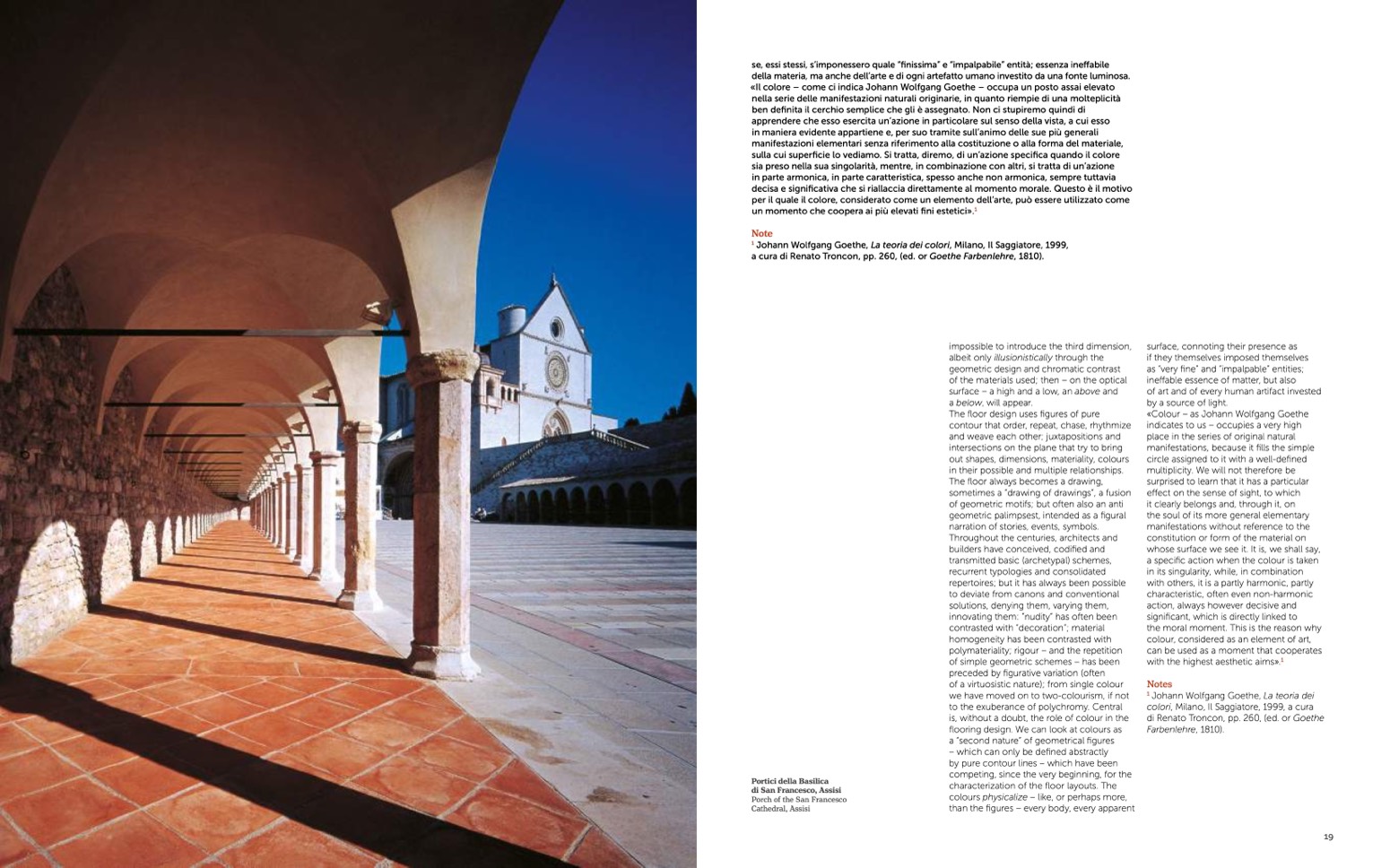
18
19
se, essi stessi, s’imponessero quale “finissima” e “impalpabile” entità; essenza ineffabile
della materia, ma anche dell’arte e di ogni artefatto umano investito da una fonte luminosa.
«Il colore – come ci indica Johann Wolfgang Goethe – occupa un posto assai elevato
nella serie delle manifestazioni naturali originarie, in quanto riempie di una molteplicità
ben definita il cerchio semplice che gli è assegnato. Non ci stupiremo quindi di
apprendere che esso esercita un’azione in particolare sul senso della vista, a cui esso
in maniera evidente appartiene e, per suo tramite sull’animo delle sue più generali
manifestazioni elementari senza riferimento alla costituzione o alla forma del materiale,
sulla cui superficie lo vediamo. Si tratta, diremo, di un’azione specifica quando il colore
sia preso nella sua singolarità, mentre, in combinazione con altri, si tratta di un’azione
in parte armonica, in parte caratteristica, spesso anche non armonica, sempre tuttavia
decisa e significativa che si riallaccia direttamente al momento morale. Questo è il motivo
per il quale il colore, considerato come un elemento dell’arte, può essere utilizzato come
un momento che coopera ai più elevati fini estetici».
1
Note
1
Johann Wolfgang Goethe, La teoria dei colori, Milano, Il Saggiatore, 1999,
a cura di Renato Troncon, pp. 260, (ed. or Goethe Farbenlehre, 1810).
Portici della Basilica
di San Francesco, Assisi
Porch of the San Francesco
Cathedral, Assisi
impossible to introduce the third dimension,
albeit only illusionistically through the
geometric design and chromatic contrast
of the materials used; then – on the optical
surface – a high and a low, an above and
a below, will appear.
The floor design uses figures of pure
contour that order, repeat, chase, rhythmize
and weave each other; juxtapositions and
intersections on the plane that try to bring
out shapes, dimensions, materiality, colours
in their possible and multiple relationships.
The floor always becomes a drawing,
sometimes a “drawing of drawings”, a fusion
of geometric motifs; but often also an anti
geometric palimpsest, intended as a figural
narration of stories, events, symbols.
Throughout the centuries, architects and
builders have conceived, codified and
transmitted basic (archetypal) schemes,
recurrent typologies and consolidated
repertoires; but it has always been possible
to deviate from canons and conventional
solutions, denying them, varying them,
innovating them: ”nudity“ has often been
contrasted with “decoration”; material
homogeneity has been contrasted with
polymateriality; rigour – and the repetition
of simple geometric schemes – has been
preceded by figurative variation (often
of a virtuosistic nature); from single colour
we have moved on to two-colourism, if not
to the exuberance of polychromy. Central
is, without a doubt, the role of colour in the
flooring design. We can look at colours as
a “second nature” of geometrical figures
– which can only be defined abstractly
by pure contour lines – which have been
competing, since the very beginning, for the
characterization of the floor layouts. The
colours physicalize – like, or perhaps more,
than the figures – every body, every apparent
surface, connoting their presence as
if they themselves imposed themselves
as “very fine” and “impalpable” entities;
ineffable essence of matter, but also
of art and of every human artifact invested
by a source of light.
«Colour – as Johann Wolfgang Goethe
indicates to us – occupies a very high
place in the series of original natural
manifestations, because it fills the simple
circle assigned to it with a well-defined
multiplicity. We will not therefore be
surprised to learn that it has a particular
effect on the sense of sight, to which
it clearly belongs and, through it, on
the soul of its more general elementary
manifestations without reference to the
constitution or form of the material on
whose surface we see it. It is, we shall say,
a specific action when the colour is taken
in its singularity, while, in combination
with others, it is a partly harmonic, partly
characteristic, often even non-harmonic
action, always however decisive and
significant, which is directly linked to
the moral moment. This is the reason why
colour, considered as an element of art,
can be used as a moment that cooperates
with the highest aesthetic aims».
1
Notes
1
Johann Wolfgang Goethe, La teoria dei
colori, Milano, Il Saggiatore, 1999, a cura
di Renato Troncon, pp. 260, (ed. or Goethe
Farbenlehre, 1810).

